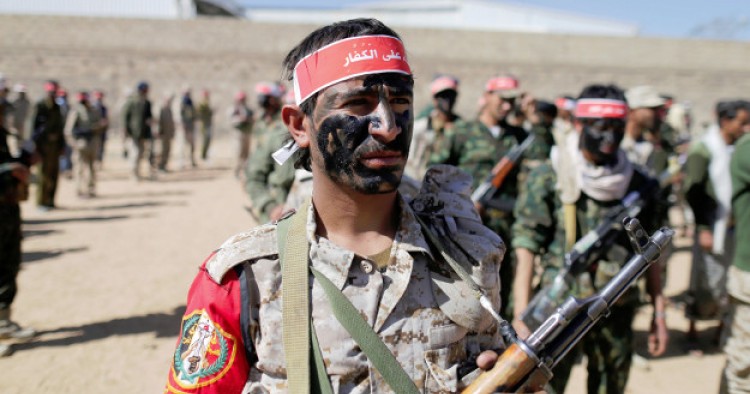On February 27, a Saudi coalition aircraft killed a senior Islamic Revolution Guards Corps (I.R.G.C.) officer, known only by the nom de guerre “The Afghan,” in Yemen’s northwestern region of Sa’ada, which borders the Kingdom. The Afghan had supervised the design and implementation of ballistic missile systems for Houthi missile brigades, according to interviews with military officials. The Afghan’s death was the sixth I.R.G.C. casualty in Sa’ada last month. Five I.R.G.C. fighters had been killed by Saudi airstrikes three weeks ago. On February 16, Sa’ada Governor Hadi Tarshan al-Waili announced that the number of I.R.G.C. and Hezbollah advisers in Sa’ada has “recently doubled.”
Comment: Over the last five months, Iran has increased its support for the Houthis’ missile campaign against Saudi Arabia and the Yemeni government. In October, Western government officials told Reuters that Iran had ramped up its support package of “anti-ship missiles, explosives, money and personnel” for the Houthis. Last November, the U.K.-based Conflict Armament Research published a report that indicated Iran had supplied the Houthis with large quantities of rocket launchers, anti-tank guided missiles, and munitions.
In October 2016, Saudi Patriot missile batteries shot down a Houthi Burkan-1 ballistic missile, which the Houthis initially claimed was intended for Mecca. In November and December, the Houthis fired over a dozen missiles into southern Saudi cities. In January 2017, the Houthis fired a Burkan-1 missile at Zuqar Island, a Saudi coalition base near Yemen’s western coast. Local and regional media outlets claimed the missile strike killed 80 coalition personnel. On February 5, a Houthi Burkan-2 missile was fired at a military base near Riyadh. The increasing range and precision of these Burkan-1 and Burkan-2 missile strikes portends tactical upgrades previously unseen in the Houthi arsenal.
The surge in Iranian military aid has coincided with the recent intensification of Houthi missile attacks, and the higher targeting of foreign military advisors for the Houthis. In December 2016, Saudi coalition aircraft killed I.R.G.C. officer Abu Haidara al-Rezai in Hajja. On January 13, Abu Khalil al-Silmi, the mastermind behind the Houthi missile strike against a UAE high-speed logistics vessel in October, was eliminated in a Saudi airstrike near Sana’a. Three days later, Yemeni security forces captured Abu Mohammad, a Houthi missile officer, in Sana’a. During his videotaped interrogation, Mohammad disclosed that he had attended ballistic missile courses taught by Hezbollah and I.R.G.C. advisers.
The Middle East Institute (MEI) is an independent, non-partisan, non-for-profit, educational organization. It does not engage in advocacy and its scholars’ opinions are their own. MEI welcomes financial donations, but retains sole editorial control over its work and its publications reflect only the authors’ views. For a listing of MEI donors, please click here.













